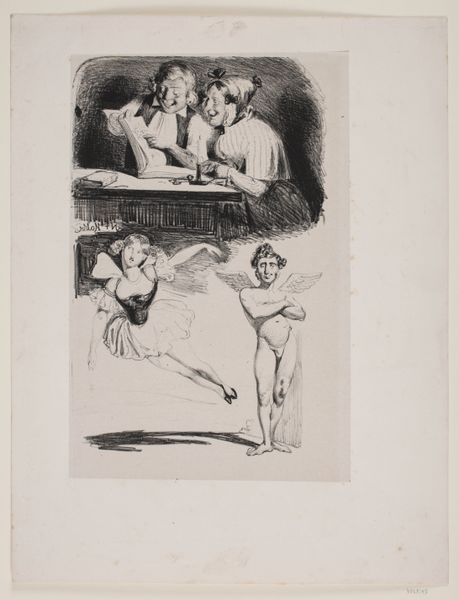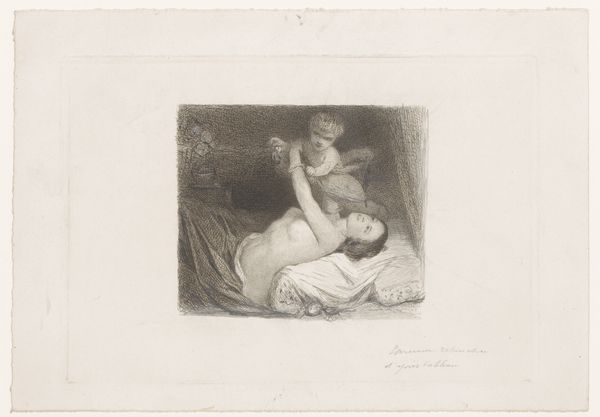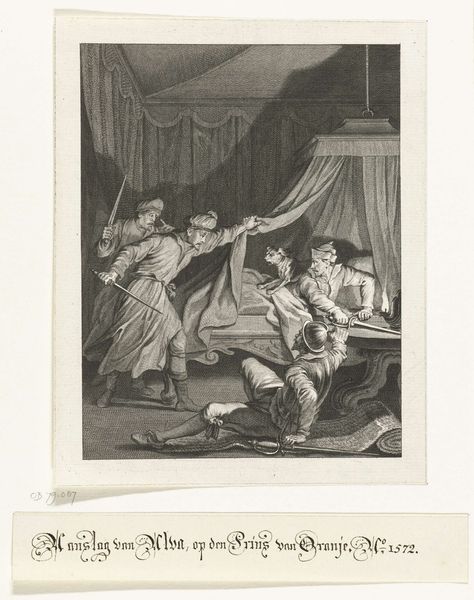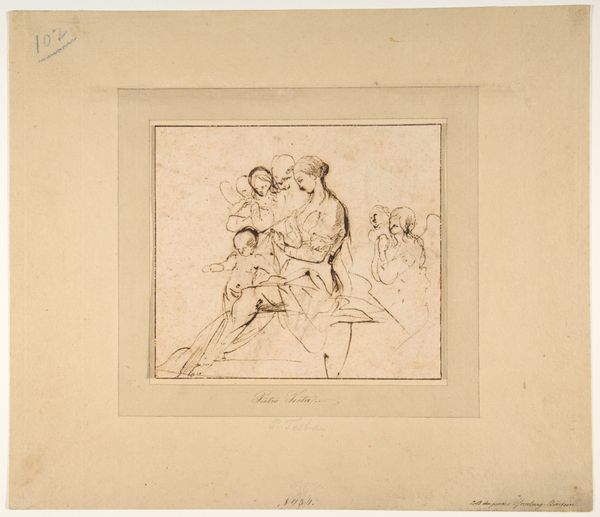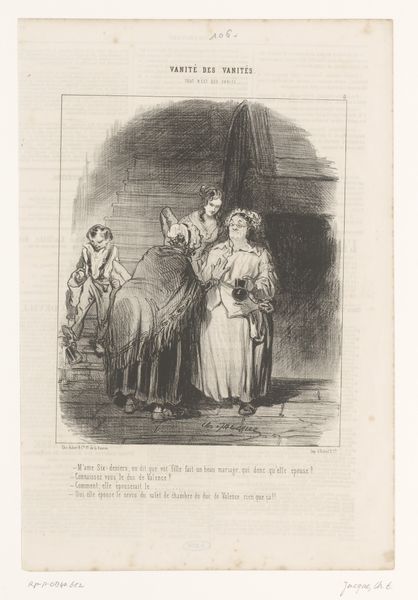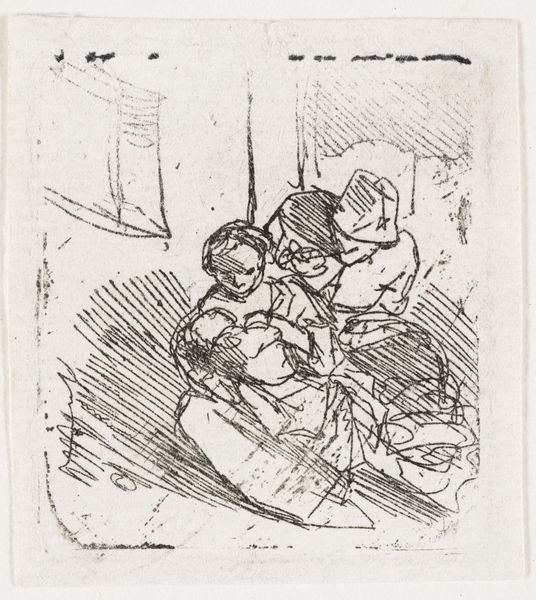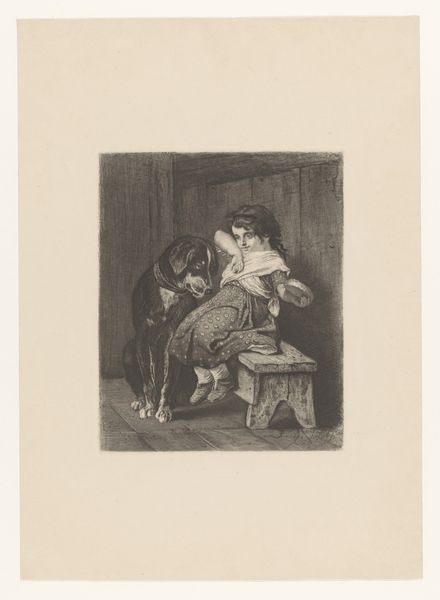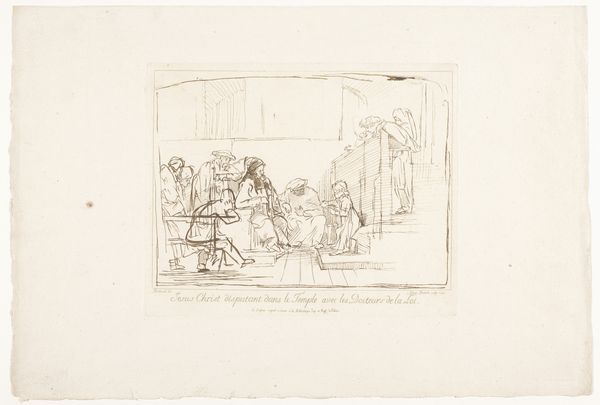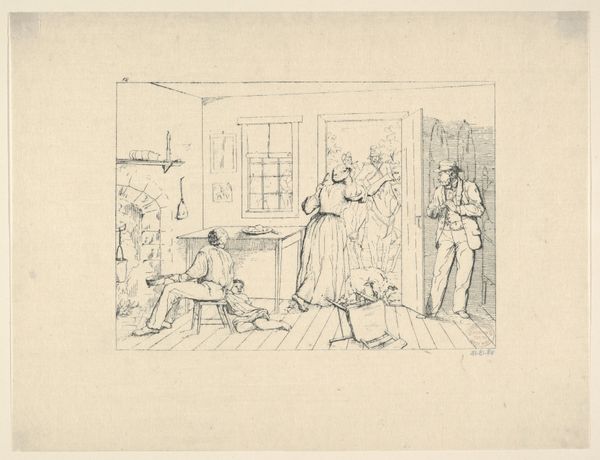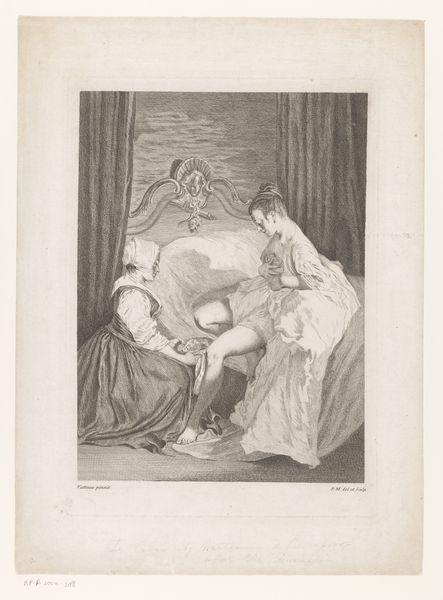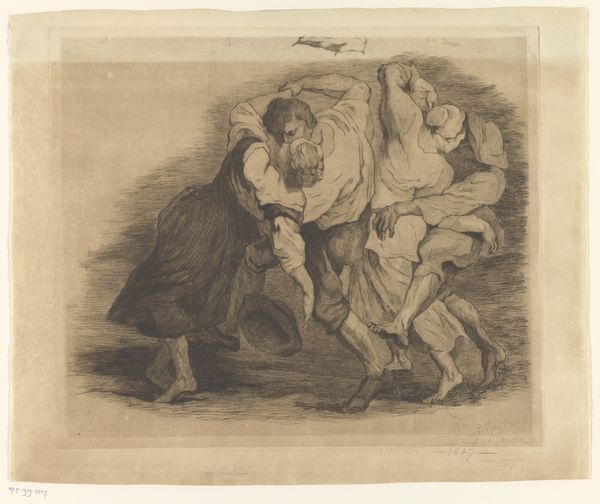
Twee schetsen van een kind en twee volwassenen (?) Possibly 1808
0:00
0:00
jurriaanandriessen
Rijksmuseum
drawing, paper, pencil
#
portrait
#
drawing
#
comic strip sketch
#
aged paper
#
light pencil work
#
narrative-art
#
sketch book
#
paper
#
personal sketchbook
#
idea generation sketch
#
sketchwork
#
romanticism
#
pencil
#
sketchbook drawing
#
genre-painting
#
storyboard and sketchbook work
#
sketchbook art
Dimensions: height 127 mm, width 139 mm
Copyright: Rijks Museum: Open Domain
Curator: Here we have Jurriaan Andriessen’s "Twee schetsen van een kind en twee volwassenen (?),” or “Two Sketches of a Child and Two Adults(?)," likely from 1808. What catches your eye? Editor: Immediately, it’s the raw quality of the line work. The immediacy. The artist clearly uses pencil on paper, but the sketchy quality makes you consider it must come from the artist’s own sketchbook. Curator: Absolutely. Andriessen was working during a period when Romanticism was blooming, which valued individual expression and emotion. These sketches capture an intimacy and sentimentality common in genre scenes depicting everyday life. The work, held at the Rijksmuseum, showcases family relations—mothers and children—in domestic interiors. Editor: True, but it's more than just sentimental. Look at how quickly the artist lays down the lines, building up figures and form, really thinking through how light and shadow describe these scenes. The drawing gives us insight into the studio process, idea generation and sketchwork and therefore labor—what he is *doing* as he *is* making. Curator: These sketchbook drawings certainly show the influence of the era's emphasis on personal and natural expression and speak to Romanticism. These weren’t intended as finished works for public display, but rather a personal exploration for the artist to conceptualize his work. The composition shows a personal storyboard, in two different sections, of narrative-art, right? Editor: Right. You're spot on. We see how this type of artwork reflects larger market tastes. Demand increased for sentimental, domestic themes within a changing societal landscape. Think of the social currency associated with showcasing domestic life, family, and artistic sensibilities. And sketchbooks provided fertile material, cheap and quick. Curator: These preliminary sketches offered an affordable option. This also hints at the rising middle class—people with the resources to cultivate art as a personal activity. This trend helped the idea of sketching bloom outside of strictly academic practice, transforming social values around image making. Editor: That it might! It certainly shifts the focus from the elite consumption to this kind of personal, active relationship with art making, which provides its own satisfaction. The immediacy and rawness speaks volumes on their own and give a social commentary regarding domesticity that's usually more private. Curator: Precisely. The artist’s quick pencil captures emotions and offers a lens into artistic creation and a mirror to Dutch family life in the early 19th century. Editor: And the labor put into creating these works allows audiences to better connect to both the themes explored and to the physical making of art, revealing its social dimensions and material significance.
Comments
No comments
Be the first to comment and join the conversation on the ultimate creative platform.
